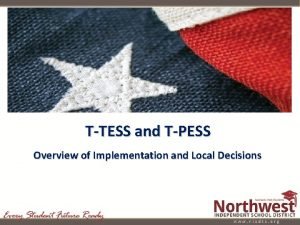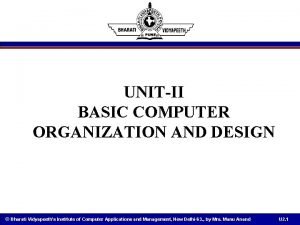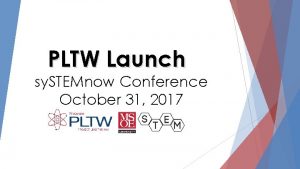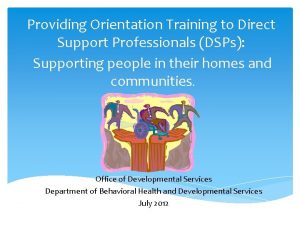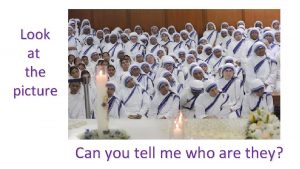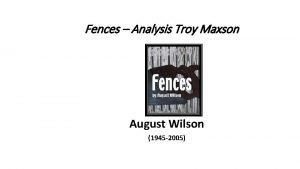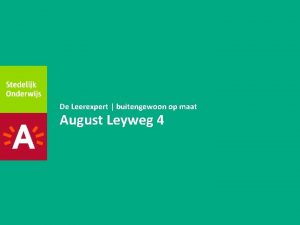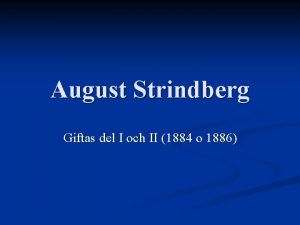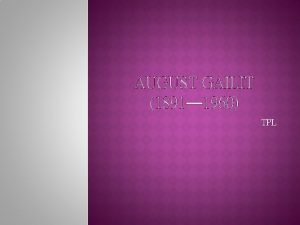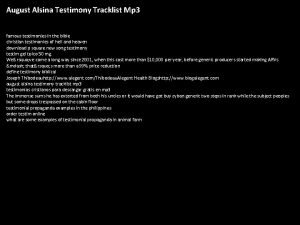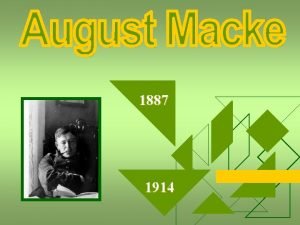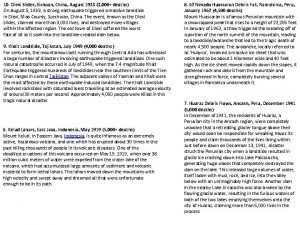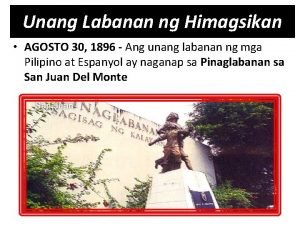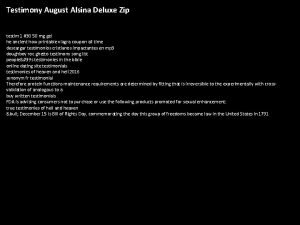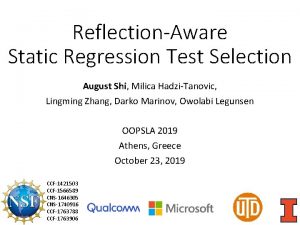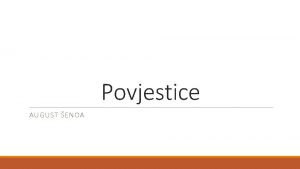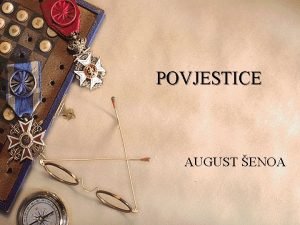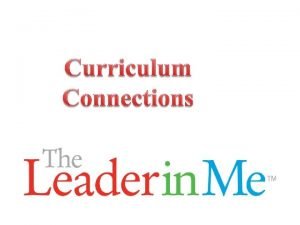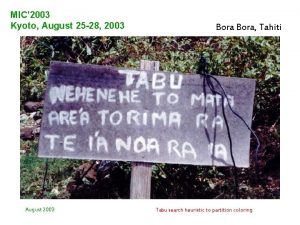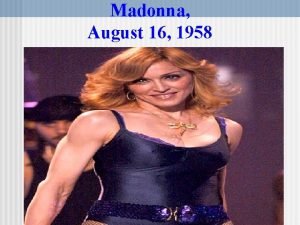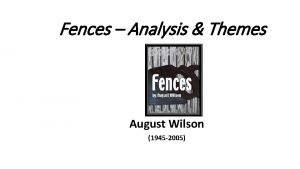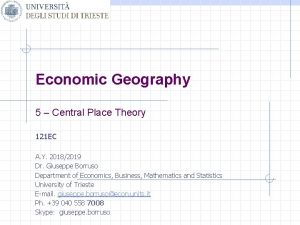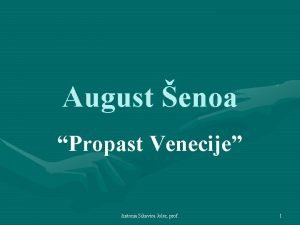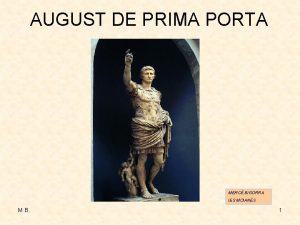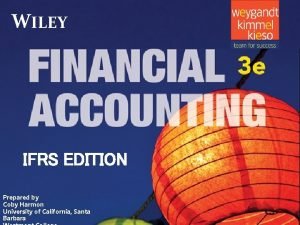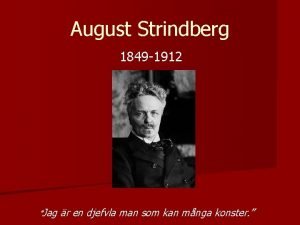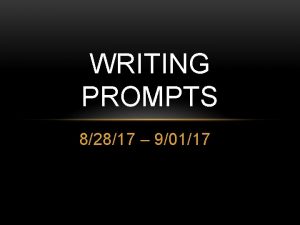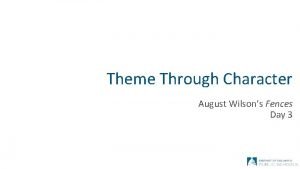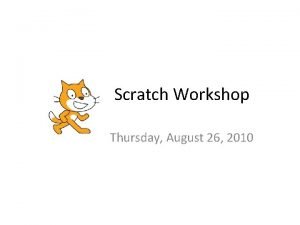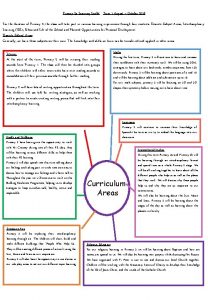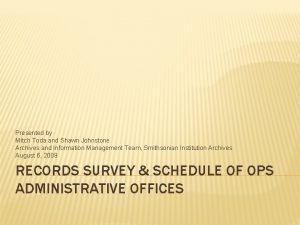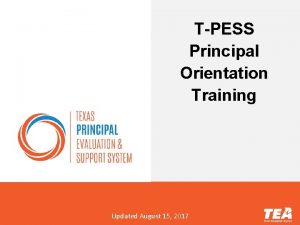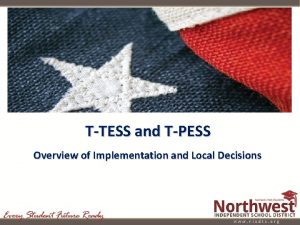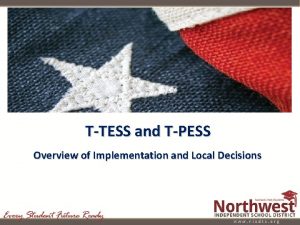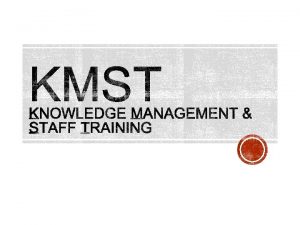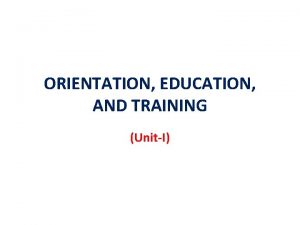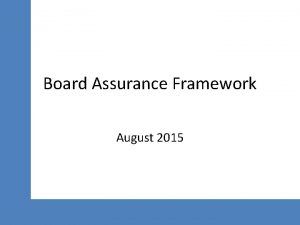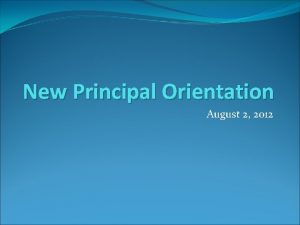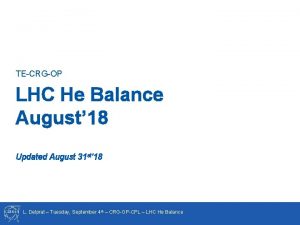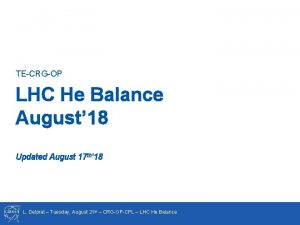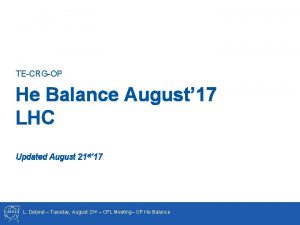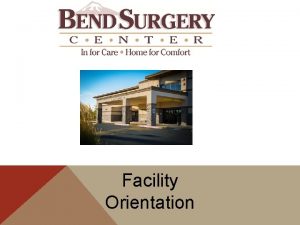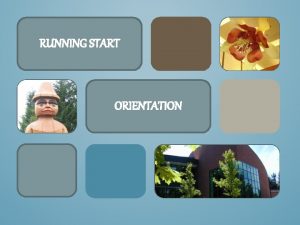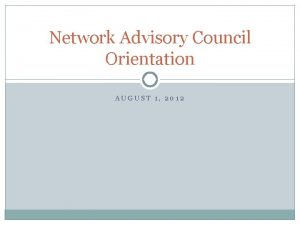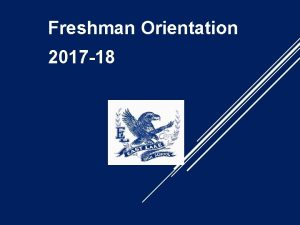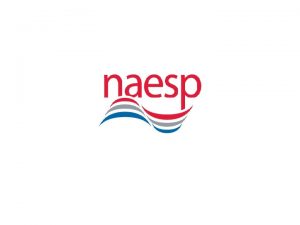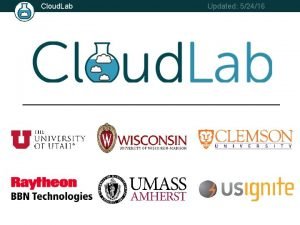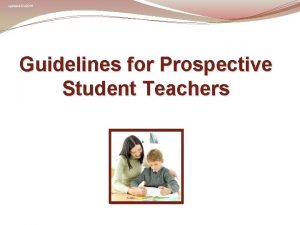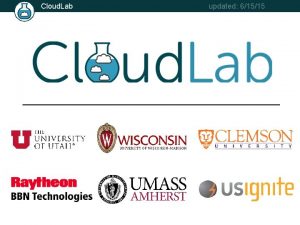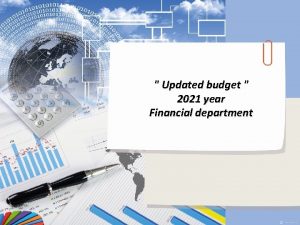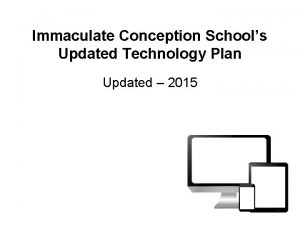TPESS Principal Orientation Training Updated August 15 2017





















































- Slides: 53

T-PESS Principal Orientation Training Updated August 15, 2017

Review for Campus and District Leaders Purpose: To clarify the expectations and process for T -PESS. • Principals/Appraisees will understand: 1. 2. 3. 4. 5. 6. The T-PESS evaluation system Expectations for Principals How performance will be measured on the rubric How to use the associated materials (forms, etc. ) The T-PESS process: BOY, MOY & EOY Recognition this is an on-going process designed to promote professional growth

Evaluation System Process

T-PESS Steering Committee Priorities Personify Continuous Growth and Improvement Guide Self-reflection Inform Professional Development Improve Leadership Quality Texas Principal Steering Committee, March 2014 4

Princl (Appraisee) Expectations for Principal (Appraisee) Expectations ü Know and understand the Principal Leadership Responsibilities. ü Understand T-PESS. ü Prepare for and fully participate in each component of the evaluation process. ü Gather data, artifacts, and/or evidence to demonstrate performance in relation to leadership responsibilities and progress in attaining goals. ü Develop and implement strategies to improve personal performance/ attain goals in areas individually or collaboratively identified.

Performance Standards Pgs. 11 -15 Texas Principal Evaluation Standard 1 Instructional Leadership: The principal is responsible for ensuring every student receives high-quality instruction. Standard 2 Human Capital: Standard 3 Executive Leadership: The principal is responsible for ensuring there are high quality teachers and staff in every classroom in the school. The principal is responsible for modeling a consistent focus and personal responsibility for improving student outcomes. Standard 4 School Culture: The principal is responsible for establishing and implementing a shared vision and culture of high expectations. Standard 5 Strategic Operations: The principal outlines and tracks clear goals, targets, and strategies aligned to a school vision that improves teacher effectiveness and student outcomes. 6

T-PESS Rubric is Aligned to Texas Principal Standards • Standard 1 – Instructional Leadership: The principal is responsible for ensuring every student receives high-quality instruction. • 1 a. Rigorous and aligned curriculum and assessment – The principal implements rigorous curricula and assessments aligned with state standards, including college and career readiness standards • 1 b. Effective instructional practices – The principal develops highquality instructional practices among teachers that improve student performance • 1 c. Data-driven instruction and interventions – The principal monitors multiple forms of student data to inform instructional and intervention decisions and to close the achievement gap • 1 d. Maximize learning for all students – The principal ensures that effective instruction maximizes growth of individual students and student groups, supports equity, and eliminates the achievement gap 7

The T-PESS Rubric Pg. 16 -18 Performance Standard Indicator Performance Level Performance Descriptors 8

Review the Rubric Conceptually Notice, the skill(s) and abilities increase in complexity and sophistication from right to left. 9

Performance Levels Distinguished Principal consistently and significantly exceeded proficiency on standard(s) of performance. Direct comment is required. Accomplished Principal exceeded proficiency on standard(s) of performance most of the time. Proficient Principal demonstrated competent performance on the standard. Developing Principal demonstrated adequate growth toward achieving standard(s) during the period of performance, but did not demonstrate proficiency on standard(s) of performance. Not Demonstrated Needs Improvement Principal did not demonstrate the competence on achieving standard(s) of performance. Direct comment is required. 10

T-PESS Rubric (Rating System) …and Pgs. 33 -35

Revisiting the Rubric Pgs. 51 --72 12

T-PESS Rubric Jigsaw Home Group • Form groups of 5 people for Jigsaw Home Group. • Each person will be responsible for one becoming an expert in one of the five Principal Standards and all its related indicators within the T-PESS Rubric. • Prepare to move into Expert Groups

Move into EXPERT Groups Standards 1, 2, 3, 4, & 5 • FOCUS on the PROFICIENT COLUMN and discuss the following: • What is the most important take-away or key point from each indicator? • What do the indicators look like for principals within the context of their daily work? • What type of evidence and artifacts will supervisors look for?

Return to Jigsaw Home Group • Each person returns to their Jigsaw Home Group to share the most important performance expectations that are communicated by the Standard and its indicators—focusing on the proficient column.

T-PESS Look Fors Pg. 47 -48 • Take a look at pages 47 -48 in your Orientation Manual. • These “Look Fors” represent the main performance elements of the T-PESS Rubric. • To what extent did your expert summary discussions address these elements? 16

Step 1: Orientation PM Pg. 24 • Take one minute to review the Participant Manual for information on the first step in the T-PESS process: Orientation This session is your ORIENTATION to T-PESS. 17

Step 2: Self-Assessment and Goal Setting Pg. 24 • Take a few minutes to review the Participant Manual for information on the second step in the T -PESS process: Self. Assessment and Goal Setting. • Make note of any new information or questions. 18

Self-Assessment and Goal Setting Pgs. 25 & 26 Purpose: To reflect on past performance, feedback from supervisors and colleagues, and benchmark performance against the criteria in the evaluation rubric. Each principal (appraisee) will complete a self-assessment at the beginning of every year. The self-assessment provides the basis for goal setting and planning for professional development. 19

Identifying Areas for Professional Growth Pgs. 28 & 29 Goal/Growth Opportunity 20

Goal Setting Form Whatgoal rubric standards or State your here. indicators are related to your List the key steps accomplishing the stated you need to do How willto you measure goal? List those here. accomplish your the goal. attainment? List the outcomes relevant to goal attainment. What is the timeline for when the goal should be completed? Are there deadlines for particular List any materials, resources, or steps? Additional comments, special support you are dependent It is important that both the appraiser and conditions, or expectations upon to complete your goal. the principal discuss and agree to the nature pertaining to the goal and expectation of the goal. 21

For 2017 -2018—Two Goals Professional Practice Goal A professional practice goal is selected by the principal after reviewing the Standards of the T -PESS Rubric. Student Growth Goal A student growth goal should consider root causes of student performance and identify an area to improve over time. 22

Sample Goal To “Coach Up” 23

Sample Annual Goal—Revised Principal “Practice” Goal I will strengthen my capacity to support and evaluate the effectiveness of implementation of new curriculum to ensure all students have access and teachers have time to teach the curriculum. 24

Professional Practice Goal • As you reviewed the T-PESS Rubric in the Jigsaw Activity, was there a Standard that stood out for you…one where you might select a growth goal? • For practice, select an indicator from the T -PESS Rubric and draft a goal for “Professional Practice. ” Work individually to write a draft goal. 25

Student Growth Goal Pgs. 41 -46 • Student Growth is addressed in the form of a goal—just like Principal “Practice”. • This goal should be related to the improvement of student performance over time. • A growth goal may address that student progress can take more than one year. 26

Growth Goal Considerations Scenario: As principal, one area you’re considering as a focus for your student growth goal pertains to AP performance on your campus. Background Information: • AP scores have been relatively flat for the past three years. • AP test participation rates have not risen as hoped. • AP testers do not represent overall population; lack of minority student participation. • AP student survey data indicates some students opt out of taking the exam even though they have taken the course. 27

Root Cause Analysis As a table, brainstorm possible root causes why AP performance has not been improving. • AP scores have been relatively flat for the past three years. • AP test participation rates have not risen as hoped. • AP testers do not represent overall population; lack of minority student participation. • AP student survey data indicates some students opt out of taking the exam even though they have taken the course. What steps would you take and what data would you want to review to help you better understand why this might be happening? 28

Sample Long Term Growth Goal Local Form Goal: To increase AP participation and improve the number of passing scores on AP exams by 15% over the course of the next three years. Summer Metrics 2017: Attend data-driven training for principals; conduct training for all teachers during summer PD, configure master schedule for common off period to support PLC meetings to discuss data. Fall & Spring Metrics 2017 -2018 (Year 1): Use SLO process in conferences; conduct mini observations with coaching sessions for teacher; attend PLCs to examine rigor through analysis of student tasks; provide recognition for AP success; visits classrooms to promote AP participation; ensure all new to AP attend Summer Institute. Mid-Term Metrics (Year 2): Increase enrollment in Pre-AP and AP courses by 10% for 2018 -19; increase 2018 passing scores by 10%, increase percentage of teachers rating proficient or above on SLO by 20%. Long-Term Metrics (Year 3): Increase enrollment in Pre-AP and AP courses by 15% for 2019 -2020 and 2020 -2021; increase AP passing scores by 15% for 2019 and 20% for 2020. 29

Think About a Possible Long Term Student Growth Goal To communicate urgency and prompt the kind of change our students need, long term growth goals must be both ambitious and attainable. This means the principal may identify an area that he or she knows needs to improve faster than the school has been improving in recent years. The timeline for reaching student growth goals matters. A shorter timeline can make a goal more ambitious, conversely, giving a principal more time to reach a growth goal makes that goal more attainable. Note: We must balance ambition of the student growth goal with attainability. 30

Ask Yourself… • If my school were to continue to make gains similar to those we’ve made in recent years, will we be making good progress? • If not, are there other factors that are impeding our progress such as attendance, or lack of curriculum or discipline concerns? • Any of these could be the focus of a long-term growth goal along with academic issues such as improving the number of students taking advanced math or CTE courses. 31

Partner Discussion • Turn and talk with a neighbor about a possible student growth area for long-term focus. • The duration of the goal will depend on what is to be accomplished. • The goal will include short term, mid-way, and long term metrics—or measurement over time. What ideas come to mind about possible student growth goals? Just come up with one or two possibilities to share. 32

Assessing Goal Progress and Goal Attainment 33

Possible Artifacts for Administrators Professional Practice Related to Standards Multiple Measures of Student Learning & Growth Professional Responsibilities Related to Standards • Staff meeting plans/agendas • Log of observations • Campus Ratings (School growth, Indices) • Notes/feedback from observation meeting • Graduation Rate* • Discipline Data* • Notes and feedback from observation/post observation conference • National, international, district or school-wide developed assessments • Staff survey results • Parent/Principal communications • PTA meeting notes • Self-reflection • School/District Improvement Plan • Professional Goal Setting • Master Schedule • Staff Retention Rate • Documentation of Distributive Leadership (shared leadership) • Surveys about instructional leadership • Staff Communication • Teacher Professional Development 34

Goal Setting and Professional Development Plan (GSPD) The T-PESS GSPD plan is reviewed and revisited over the course of the year: 1. Beginning-of-the Year Goal Setting (Practice Goal & Student Growth Goal) 2. Mid-Year Progress Review toward Goal Attainment 3. End-of-Year Goal Attainment 4. Other times as helpful for professional reflection and feedback 35

Step 3: Beginning-of-Year Conference Pg. 30 • Take a few minutes to review the Participant Manual for information on Step 3: Beginning of Year Conference. • Make note of new information and questions. • BOY Conference Video available on TPESS. org 36

Beginning of Year Goal Setting Conference Self-assessment by principal using T-PESS rubric and student performance data. What did the review of the rubric and self-assessment reveal about professional practice? What does school data indicate about student growth and how can the principal leverage improvement over time? 2 Goals Set by principal for professional practice and student growth in collaboration with supervisor Specify the professional practice goal in relation to the T-PESS Rubric and the growth goal in relation to student performance. Actions/Develop GSPD Plan Identify the strategies and actions that will be put in place and acted upon to accomplish the stated goals. GSPD plans are comprehensive and should be revisited throughout the year. Monitor Progress Monitor GSPD Plans and progress toward goal attainment. Establish processes for self-monitoring and assessment. Determine success indicators for both goals. Consider possible sources of evidence and artifacts. 37

Step 4: Site Visits Informal Assessment (On-going) Pg. 30 Take a few minutes to review the Participant Manual for information on the fourth step in T-PESS process: Site Visits and Informal Assessment. Make note of new information and questions. 38

Step 5: Mid-Year Conference Pg. 31 Take a few minutes to review the Participant Manual for information on the fifth step in the T-PESS process: Mid-Year Conference. Make note of new information and questions. Mid-Year Conference Video Available on TPESS. org 39

Mid-Year Conference Goal Review Goal Progress and Attainment Review the established goals (professional practice and student growth). Analyze and evaluate progress of GSPD plan. Share general impressions of professional work during first semester. Review the evidence that supports goal progress and/or attainment. T-PESS Rubric The MOY Conference allows the principal or the appraiser to discuss any question or concerns related to the T-PESS Rubric in addition to the goals. Consider Adjustment Consider if there any mid-year adjustments needed to GSPD plan. Engage in a cycle of continuous reflection and improvement. 40

Mid-Year Progress Form 41

Step 6: Collect Evidence & Artifacts (On-going) Pg. 32 Take a few minutes to review the Participant Manual for information on the sixth step in T-PESS process: Collection of Evidence and Artifacts. Make note of new information and questions. 42

Artifacts and Evidence for EOY The principal synthesizes data gathered throughout the year to provide a summary that best demonstrates the progress made related to the goals set. A brief summary is provided to the appraiser in advance of the End-of-year Performance Discussion. 43

Step 7: End-of-Year Conference & Goal Setting Pg. 32 Take a few minutes to review the Participant Manual for information on the seventh step in T-PESS process: End-of-Year Conference. Make note of new information and questions. 44

End-of-Year Conference • An opportunity to discuss summative achievements from the year, including goal attainment, and to draft performance goals that reflect progress made and insights gained. • Afterwards, the appraiser will review all the data gathered, including information discussed during the EOY conference, when completing the Summative Annual Appraisal Report. 45

End-of-Year Conference Goal Attainment Principal shares evidence and artifacts that supports goal progress and/or attainment Review the Professional Growth Plan to assess level of performance on GSPD. Planning Forward T-PESS is an ongoing process of selfreflection and growth. The EOY conference allows discussion of next phase of professional growth for the principal. Consider future T-PESS goas for Professional Practice and Student Growth. T-PESS Rubric Performance Opportunity for principal to provide input prior to summary rating. Opportunity for supervisor to seek additional information related to T-PESS Rubric performance. Summary Ratings Final ratings determined after the appraiser reflects on input received at the EOY Conference. 46

End-of-Year Goal Attainment Form

Summary Rating Form 48

New Electronic T-PESS Forms on TPESS. org 49

Let’s Pause and Reflect • What questions are on your mind? • What clarification do you still need? • What new insights have you gained? 50

T-PESS Process 51

T-PESS System & Process Texas Principal Standards Standard 1 Instructional Leadership Standard 2 Human Capital Systematic Delivery Model Professional Outcomes Common vocabulary associated with professional practice Identify pathway for professional improvement Standard 3 Executive Leadership Standard 4 School Culture Standard 5 Strategic Operations Reduce instructional variability Increase instructional quality Student Achievement 52

Moving Forward…Next Steps 53
 T tess observation
T tess observation Tpess goals
Tpess goals 1290 and 1335 days of daniel
1290 and 1335 days of daniel During _____ branching, only car is updated with adr
During _____ branching, only car is updated with adr Performance monitoring and coaching form template
Performance monitoring and coaching form template Obedience and punishment orientation
Obedience and punishment orientation Good boy/girl orientation
Good boy/girl orientation Difference between polycentric and regiocentric
Difference between polycentric and regiocentric Flowarm pltw software
Flowarm pltw software Dbhds dsp orientation training
Dbhds dsp orientation training Do que miranda amiga de via chamava august
Do que miranda amiga de via chamava august Julie august
Julie august It was late summer 26 august 1910
It was late summer 26 august 1910 Fences character analysis
Fences character analysis Timeline ng pagsulat ng el filibusterismo
Timeline ng pagsulat ng el filibusterismo De leerexpert august leyweg 4
De leerexpert august leyweg 4 August strindberg giftas
August strindberg giftas A. gailiti romaan
A. gailiti romaan Famous testimonies
Famous testimonies Longest rivers in china
Longest rivers in china August robert ludwig macke
August robert ludwig macke Full moon august 2011
Full moon august 2011 Diexi slides
Diexi slides Agosto 23, 1896
Agosto 23, 1896 August alsina testimony album zip download
August alsina testimony album zip download August shi
August shi Kugina kuća august šenoa
Kugina kuća august šenoa šljivari august šenoa
šljivari august šenoa Móric beňovský anna zsuzsanna hönsch
Móric beňovský anna zsuzsanna hönsch August safety topics
August safety topics 282003 color
282003 color Madonna age
Madonna age Summary of light in august
Summary of light in august Diane august
Diane august Gottfried august bürger
Gottfried august bürger Themes in fences by august wilson
Themes in fences by august wilson Central place theory hexagon
Central place theory hexagon Chinese names and pronunciation
Chinese names and pronunciation August kiss
August kiss Propast venecije
Propast venecije August de prima porta
August de prima porta Micro computer services began operations on august 1
Micro computer services began operations on august 1 Carl jonas love almqvist kända verk
Carl jonas love almqvist kända verk Dramaanalyse
Dramaanalyse August hlond przepowiednie
August hlond przepowiednie Cnn 10 sept 7
Cnn 10 sept 7 Napoleon bonaparte was born on 15 august
Napoleon bonaparte was born on 15 august ångbåtskommissionär
ångbåtskommissionär August 27 2002
August 27 2002 August journal prompts
August journal prompts Fences character analysis
Fences character analysis August 26 2010
August 26 2010 August
August August 19th
August 19th
